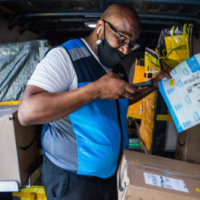‘Joint Employment’ Keeps Corporations Accountable When They Outsource Work
The legal concept of “joint employment” keeps companies that use subcontracted labor accountable for labor standards.

Outsourced Work: Who’s Accountable for Labor Violations?
Business outsourcing is on the rise. Many companies source their labor through staffing or temp firms or through layers of subcontractors.
Sometimes, outsourcing can be a more efficient way of producing goods and services; but other times, unscrupulous employers use outsourcing as a strategy to evade employment and labor laws and skip out on worker benefits.
The company operating the worksite may not be the same company that hired the workers and issues the paychecks. So, when problems like unpaid wages or unsafe work conditions arise, who can be held responsible?
This is where the legal concept of “joint employment” can help workers assert their rights and hold wrongdoers accountable.
What Is Joint Employment?
Joint employment is an important legal concept for workers’ rights. It means that a group of workers may have more than one (legally responsible) employer on a particular job. In that case, all employers are jointly responsible for labor standards—and jointly accountable if they violate those standards.
In other words: under joint employment, more than one company can be held responsible as the employer for violations of employment and labor laws.
Joint employment arises when corporations outsource all or part of their workforce to staffing companies or other subcontractors without giving up the right to control the work; in that case, they remain jointly liable for labor or employment law violations.
Why Does Joint Employment Matter for Workers?
Joint employment protects workers’ right to organize, promotes worker voice on the job, supports responsible outsourcing and workplace oversight by employers, and results in better overall protections for workers.
When a subcontractor fails to pay its workers or make a worksite safe, for example, joint employment enables workers to hold the contracting company—the one that engaged the subcontractor—legally responsible for compliance, and for addressing the harm to workers.
Joint employment is an important part of many employment and labor laws:
- Under the Fair Labor Standards Act, joint employers must comply with the child labor, minimum wage, retaliation, and overtime provisions of the law.
- Under the National Labor Relations Act, joint employers are required to come to the bargaining table and can be held liable for committing unfair labor practices.
- Under the Occupational Safety and Health Act, joint employers must ensure healthy and safe workplaces.
Which Industries Rely on Outsourced Labor?
Companies in these industries are sourcing large portions of their workforce through intermediary subcontractors such as staffing agencies, specialized contract firms, and franchises:
- Retail
- Hotels
- Home care
- Fast food
- Janitorial
- Construction
- Delivery
- Warehousing
- And more
What Are Some Examples of Joint Employment?
Courts have applied the concept of joint employment through employment and labor laws to multiple business entities since the 1940s—it’s nothing new. For example:
- Farm workers have held labor contractors and the big growers that engage them responsible for unpaid minimum wages.
- Garment workers have recovered unpaid wages from sweatshop operators and their “jobbers.”
- Janitors have recovered unpaid overtime from big-box retailers after the smaller cleaning contractors they outsourced to didn’t pay their workers.
- Temp and staffing workers have successfully held accountable worksite and intermediary companies for labor violations.
Who’s a Joint Employer? The Right to Control Is Key.
To find that businesses are jointly responsible for violations of employment or labor laws, most laws require a showing that two or more entities share the right to control the work. The Fair Labor Standards Act is broader, sweeping in any companies or individuals that are “suffered or permitted to work” by the contracting company.
For many workers, the company they directly “work for” may not be the company that actually calls the shots.
In contracted labor, one employer is often larger and more established, with a greater ability to implement policies or workplace changes to ensure compliance with employment and labor laws.
In such situations, recognizing that the entities are joint employers is essential to securing remedies for workers, future compliance with the law, and accountability for all responsible parties.
Statistics on Outsourced Work
million temporary help and staffing agency jobs are held by workers in the U.S. whose employers decided to hire via temp and staffing agencies.
more temp workers were hired between April 2020 and July 2022.
million workers in the U.S. work for a franchisee that has a corporate franchisor that often sets job conditions.



